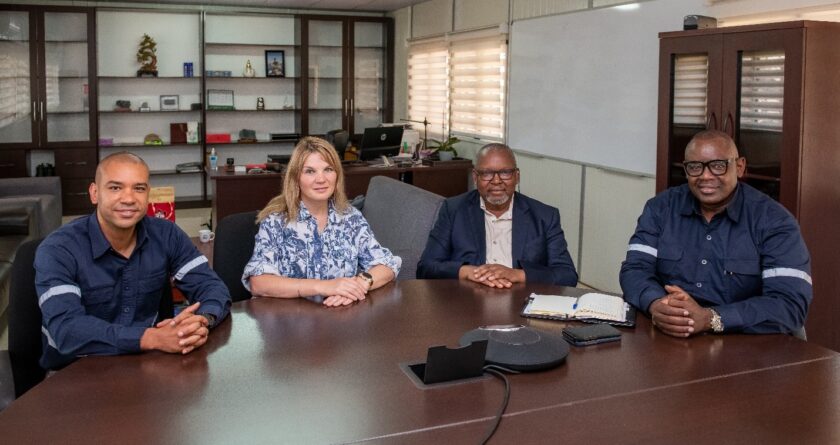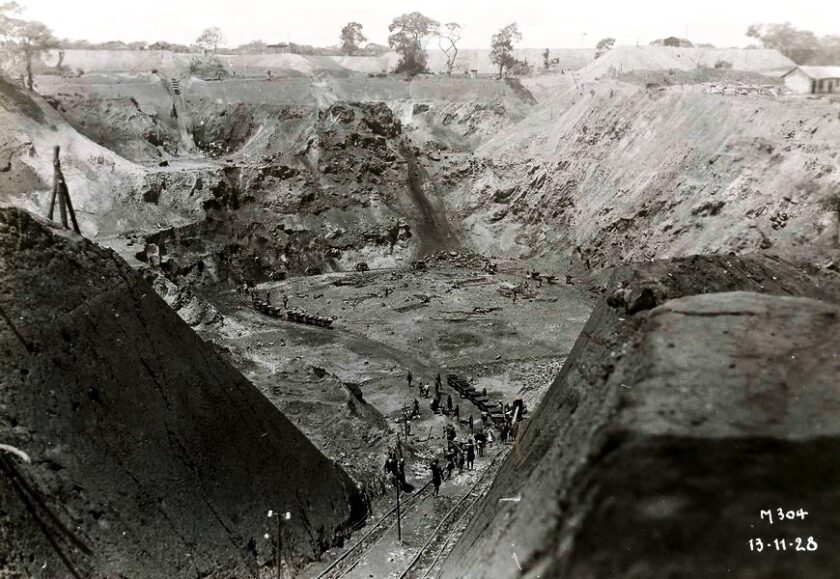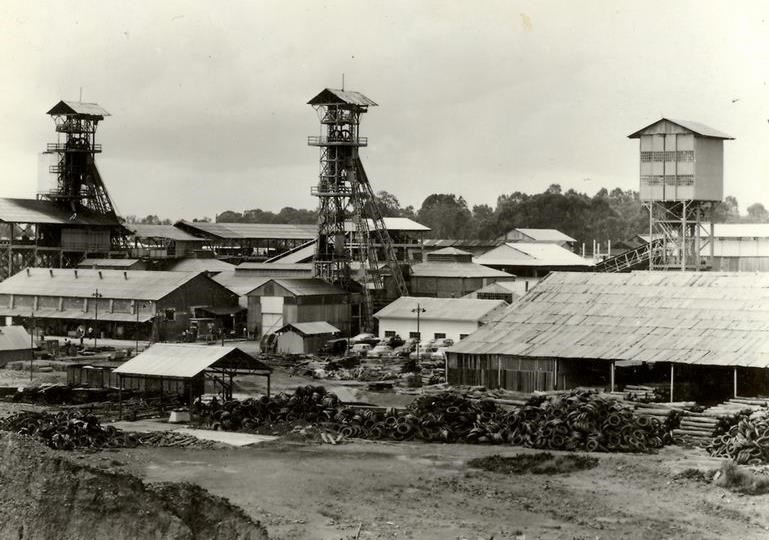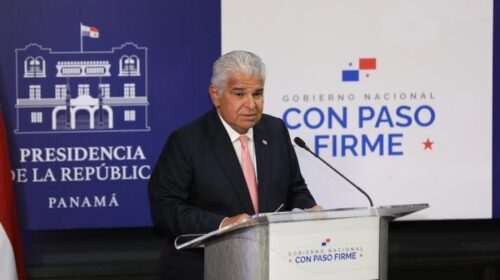Ivanhoe Mines and Gecamines Sign New Agreement to Return the Ultra-High-Grade Kipushi Mine in the DRC to Production
Kipushi, Democratic Republic of Congo–(February 14, 2022) – Ivanhoe Mines (TSX: IVN) (OTCQX: IVPAF) Executive Co-Chair Robert Friedland and President Marna Cloete, together with Alphonse Kaputo Kalubi (Chairman) and Bester-Hilaire Ntambwe Ngoy Kabongo (CEO) of Gécamines, DRC’s state-owned mining company, are pleased to announce that Kipushi Holding, an Ivanhoe Mines wholly-owned subsidiary, and Gécamines have signed a new agreement to return the ultra-high-grade Kipushi Mine back to commercial production. Kipushi will be the world’s highest-grade major zinc mine, with average grade of 36.4% zinc over the first five years of production.
Watch a new video showcasing Kipushi’s planned transformation into the world’s highest-grade major zinc mine: https://vimeo.com/676846621/282541f745
The new agreement sets out the commercial terms that will form the basis of a new Kipushi joint-venture agreement establishing a robust framework for the mutually beneficial operation of the Kipushi Mine for years to come, and is subject to execution of definitive documentation.
Alphonse Kaputo Kalubi commented: “We recently have witnessed Ivanhoe’s outstanding achievements in transforming the Kamoa-Kakula joint venture into a state-of-the-art copper producer applying the highest standards, now a benchmark on the Congolese Copperbelt. Ivanhoe and Gécamines also have now redefined the Kipushi Project in an equitable manner, aligned with the expectations of the Mining Code and those of Gécamines’ sole shareholder, the Congolese State.
“We are convinced that Kipushi’s new partnership around the Big Zinc will be a benchmark for a successful combination of expertise, resources, a unique asset and a shared desire to create value for stakeholders, the State, shareholders and neighbouring communities. Kipushi, like Kamoa-Kakula, brings new standards, employment opportunities, better health and education infrastructure, and the conditions for the emergence of a dynamic socio-economic fabric around Kipushi. Gécamines, which has operated this mine for a long time, aims, by consolidating its partnership with Ivanhoe, to optimize its contribution to the DRC’s mining sector.”
Bester-Hilaire Ntambwe Ngoy Kabongo added: “We are excited to move our longstanding partnership with Ivanhoe Mines into a new phase that will deliver significant long-term benefits to all parties. Ivanhoe Mines has been a key partner in the Kipushi Project for over a decade and we appreciate their continued commitment to the project. We are confident in Ivanhoe Mines’ technical and financial capabilities to operate the Big Zinc and trust that we can jointly develop the project in a sustainable, responsible and value adding manner for its stakeholders, such as neighbouring communities. Gécamines sees in it the opportunity for an improved exploitation of the Big Zinc, the development of an integrated economic fabric and the imbedding of skills in the Haut-Katanga province.”
“The new agreement with Gécamines is a testament to the great perseverance, ingenuity and patience of Ivanhoe’s team, working alongside our partners in the Democratic Republic of Congo,” Mr. Friedland said. “On behalf of Ivanhoe Mines’ Board, I would like to thank our team, led by our President Marna Cloete, who have helped us arrive at this historic day.
“The outstanding performance by the Kamoa Copper team in delivering the first phases of the Kamoa-Kakula Mine, ahead of schedule and on budget, undoubtedly helped expedite the new agreement, as it showcases our strong development capabilities and industry-leading community initiatives to our partner Gécamines and the Congolese government.
“The new agreement now allows us to responsibly, efficiently and expeditiously develop Kipushi into an ultra-high-grade zinc producer, with outstanding potential to find more zinc, copper, germanium and silver resources – paving the way to fulfilling its promise of significant, long-lasting, economic and social benefits for the Congolese people.
“The past few years have been a significant challenge for us all, including the loyal men and women preparing Kipushi’s underground workings for a resumption of production. Together, we have faced the global impact of the COVID-19 pandemic and we have emerged stronger than ever. Now we have a clear line of sight on having our three tier-one, cornerstone mining assets enter commercial production.”
(L-R) Olivier Binyingo (Ivanhoe Mines Vice President Public Affairs DRC), Marna Cloete (Ivanhoe Mines President), Alphonse Kaputo Kalubi (Chairman of Gécamines), and Louis Watum (General Manager, Kipushi Corporation) discussing the Kipushi partnership during a recent visit to the Kamoa-Kakula mining complex.

Gécamines’ Chairman Alphonse Kaputo Kalubi (left) “operating” a piece of heavy equipment at Kamoa-Kakula’s state-of-the-art training centre.

The re-birth of a mining legend; Kipushi is a significant past producer of copper, zinc, germanium and precious metals
The Kipushi copper-zinc-germanium-silver mine in the DRC Copperbelt is adjacent to the town of Kipushi and approximately 30 kilometres southwest of Lubumbashi. It is located less than one kilometre from the Zambian border.
Kipushi has a long and storied history as a major producer of copper and zinc. Built and then operated by Union Minière for 42 years, Kipushi began mining a reported 18% copper deposit from a surface open pit in 1924. It was the world’s richest copper mine at the time. The Kipushi Mine then transitioned to become Africa’s richest underground copper, zinc and germanium mine. State-owned Gécamines gained control of Kipushi in 1967 and operated the mine until 1993, when it was placed on care and maintenance due to a combination of economic and political factors.
Over a span of 69 years, Kipushi produced a total of 6.6 million tonnes of zinc and 4.0 million tonnes of copper from 60 million tonnes of ore grading 11% zinc and approximately 7% copper. It also produced 278 tonnes of germanium and 12,673 tonnes of lead between 1956 and 1978. There is no formal record of the production of precious metals as the concentrate was shipped to Belgium and the recovery of precious metals remained undisclosed during the colonial era; however, drilling by Ivanhoe Mines has encountered significant silver values within Kipushi’s current zinc- and copper-rich deposits.
Germanium is a strategic metal used today in electronic devices, flat-panel display screens, light-emitting diodes, night vision devices, optical fiber, optical lens systems, and solar power arrays.
Most of Kipushi’s historical production was from the Fault Zone, a steeply-dipping ore body rich in copper and zinc that initially was mined as an open pit. The Fault Zone extends to a depth of at least 1,800 metres below surface, along the intersection of a fault in carbonaceous dolomites (see Figure 3).
Before Kipushi was idled, Gécamines discovered the Big Zinc deposit at a depth of approximately 1,250 metres below surface and adjacent to the producing Fault Zone (see Figure 3). The Big Zinc Deposit has not been mined and is the initial target for production as outlined in the new feasibility study.
Since acquiring its interest in the Kipushi Mine in 2011, Ivanhoe’s drilling campaigns have upgraded and expanded the mine’s zinc-rich Measured and Indicated Mineral Resources to an estimated 11.78 million tonnes grading 35.34% zinc, 0.80% copper, 23 grams/tonne (g/t) silver and 64 g/t germanium, at a 7% zinc cut-off, containing 9.2 billion pounds of zinc, 8.7 million ounces of silver and 24.4 million ounces of germanium (see Table 1).
In addition, Ivanhoe’s drilling expanded Kipushi’s copper-rich Measured and Indicated Mineral Resources to an additional 2.29 million tonnes at grades of 4.03% copper, 2.85% zinc, 21 g/t silver and 19 g/t germanium, at a 1.5% copper cut-off – containing 144 million pounds of copper (see Table 1).
In 1924, Kipushi began mining 18% copper from a surface open pit, before transitioning to Africa’s richest underground copper and zinc mine. This picture shows the Kipushi open pit in November 1928.

Picture of the headframes for Kipushi shafts 1, 2 and 3, and the Kipushi concentrator in February 1966.

![]()





